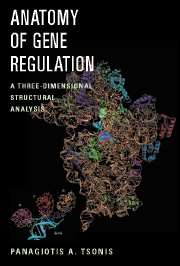Book contents
- Frontmatter
- Contents
- Preface
- 1 A General Introduction to 3-D Structures
- 2 The Higher Organization of the Genome
- 3 Structure of DNA and Telomeres
- 4 DNA Replication
- 5 Transcription in Prokaryotes
- 6 Transcription in Eukaryotes
- 7 Splicing
- 8 Modifications of mRNA
- 9 Compartmentalization of Transcription
- 10 Protein Synthesis
- 11 The Birth and Death of Proteins
- Further Reading and References
- Index
5 - Transcription in Prokaryotes
Published online by Cambridge University Press: 24 May 2010
- Frontmatter
- Contents
- Preface
- 1 A General Introduction to 3-D Structures
- 2 The Higher Organization of the Genome
- 3 Structure of DNA and Telomeres
- 4 DNA Replication
- 5 Transcription in Prokaryotes
- 6 Transcription in Eukaryotes
- 7 Splicing
- 8 Modifications of mRNA
- 9 Compartmentalization of Transcription
- 10 Protein Synthesis
- 11 The Birth and Death of Proteins
- Further Reading and References
- Index
Summary
PRIMER Unwinding of DNA is not only restricted during replication but also occurs during transcription, even though the unwinding takes place in a different way. Transcription is a very important step, perhaps the most important step in regulation. Transcription determines which genes will be expressed and, therefore, proceed for decoding and protein synthesis. During the process of transcription, the 3′ → 5′ noncoding DNA strand becomes the template for the synthesis of RNA. The RNA transcript, therefore, keeps the sequence order of the coding strand, 5′ → 3′. The main enzyme here is RNA polymerase. Regulation at this level is very unique and markedly different in prokaryotes and eukaryotes. Therefore, for clarity, I describe transcription in prokaryotes first (this chapter) and continue with transcription in eukaryotes in Chapter 6).
The first part of this chapter examines the structure of the prokaryotic RNA polymerase and the mechanisms of transcription initiation and elongation as revealed by 3-D complexes of RNA polymerase and DNA. In the second part, I present some of the mechanisms involved in regulating gene transcription in prokaryotes. Having as a focus to present these events at the 3-D level, my aim is not to be redundant, and in doing so I have omitted information that can be found in microbiology and biochemistry books. Therefore, the basic structural motifs involved in transcriptional regulation are presented in a few regulators to pinpoint similarities and differences.
- Type
- Chapter
- Information
- Anatomy of Gene RegulationA Three-dimensional Structural Analysis, pp. 73 - 103Publisher: Cambridge University PressPrint publication year: 2003



